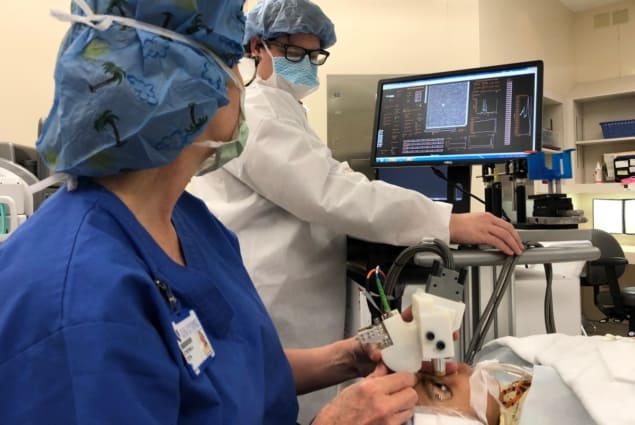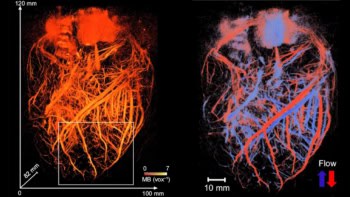
A handheld ophthalmology device with resolution-boosting adaptive optics technology has demonstrated the ability to image individual photoreceptors in the eye. The new portable instrument will allow improved diagnosis of eye diseases and could one day enable early detection of brain-related diseases and trauma (Optica 5 1027).
“Until now, the imaging systems required for high-resolution photoreceptor imaging consisted of large, heavy components on an optical table that could only be used with cooperative adults sitting upright,” explains team leader Sina Farsiu from Duke University. “Our portable handheld system could expand this important imaging technique to children and infants, as well as to adults who may not be able to sit upright and stare straight ahead.”
Photoreceptors, specialized neurons that convert light entering the eye into signals sent to the brain, are the only neurons in the body that can be imaged non-invasively. As well as diagnosing eye disease, images of photoreceptors could provide insights into processes occurring in the brain.
For example, preliminary studies have shown that changes in the retina can be observed during the early stages of Alzheimer’s disease and after traumatic brain injuries such as concussions. The system, which measures just 10 x 5 x 14 cm, could also be used to image patients in a reclined position as they undergo surgery.
Currently, doctors image photoreceptors using an adaptive optics scanning laser ophthalmoscope (AOSLO). Adaptive optics technology increases image resolution by using a wavefront sensor to detect light distortion caused by the eye. A deformable mirror then compensates for the detected distortion, leading to clearer images. The components required, however, increase the system’s size, weight and cost.
To shrink these components, the team developed a new algorithm to perform wavefront sensing. “Other researchers have shown that the wavefront sensor can be replaced by an algorithm, but these algorithms haven’t been fast enough to be used in a handheld device,” says Farsiu. “The algorithm we developed is much faster than previously used techniques and just as accurate.”
The researchers also incorporated a commercial MEMS-based deformable mirror measuring just 10.5 mm in diameter. “The optical and mechanical design combined with our new algorithm made it possible to create the handheld device,” notes team member Joseph Izatt. “Adaptive optics systems are very sensitive to slight vibrations or motions, but we designed our system to be very stable.”
The researchers used their handheld AOSLO system to image the retinas of 12 healthy adult volunteers and two children under anaesthesia – representing the first use of adaptive optics to image photoreceptors in children. The system could capture detailed images of even the very small photoreceptors close to the centre of the retina, which play a key role in vision.
Before starting large-scale clinical trials, the researchers plan to incorporate additional imaging modalities for detecting disease into the instrument. To help other scientists adapt their system for specific applications, they have made the optical and mechanical designs, computational algorithms and control software for the handheld AOSLO system available online free of cost.



